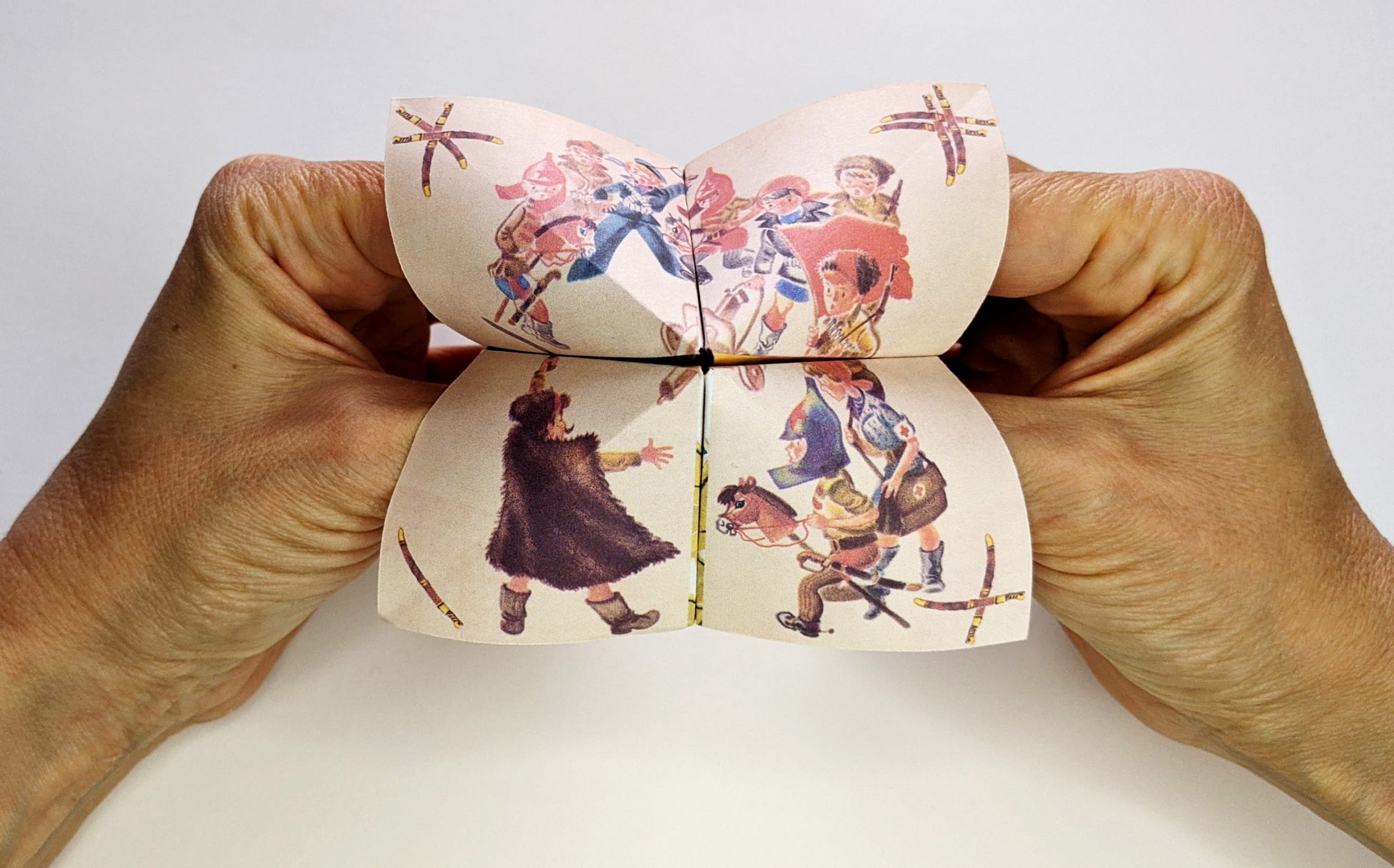Download the Hide and Seek PDF here and print it double-sided, in color. Folding instructions are included in the video below.
Hide and Seek explores how systemic forms of oppression, suppression, and propaganda are often masked in “charming” representations of folk tradition, in everyday materials, and in revisionist storytelling. The piece considers how images and rhetorics of play can be used to shape conversations around who has the right to claim citizenship, who has the right to seek asylum, and how immigrants should be treated by the state. It highlights how seemingly benign images (utilizing tropes of childhood innocence and naive patriotism) can travel along diasporic routes as instruments of state violence—replaying and reentrenching historical patterns of nationalism and ethnic persecution outside of their primary contexts.
Hide and Seek’s interactive sculpture contains a collage of Moldovan folk embroidery patterns and Soviet-era illustrations taken from alphabet primers. On one side, richly patterned embroidery hides a darker dimension: my family was culturally disqualified from wearing such embroidery and participating in many folk traditions, despite our having lived in the region for multiple generations. As Jews, we were never recognized as ethnically Moldovan, and the absence of these traditional patterns marked my family as other—forever an expendable remainder population, to be openly persecuted whenever it was politically expedient.
The other side’s figurative graphics come from the books my parents carried with them when they emigrated as refugees from the Moldavian Soviet Socialist Republic. As I was born stateless, moving across the borders of non-Russian-speaking nations, these primers served as my first introduction to written Russian. Along with the Cyrillic alphabet, the books are filled with Soviet propaganda and embedded with jingoistic ideas, support for a militarized state, and endless notes and nods on how to be a “good Soviet.”
Presented in the form of a child’s paper “fortune teller,” Hide and Seek formalizes the way these patterns of propaganda and design are folded in on one another, creating endless permutations when the viewer engages with the object. Further repetitions and patterns are found in the images of children actively engaged in their war games. They remind me of the insurrectionists storming the US Capitol earlier this year. Dressed in animal skins, flags as capes, horned helmets, and other fantasy costumes, the children provide an uncanny echo of the insurrectionists as the paper unfolds and takes shape, reflecting patterns of state-sponsored suppression, targeted racism, and exclusion. This interactive sculpture reminds us to be wary of all the seemingly harmless ways in which the threat of nationalism is represented and placed in our hands.
Jenny Yurshansky’s practice is deeply informed by being a refugee. Through a research-based approach, she explores the trauma of displacement, interrogating notions of belonging and otherness within the frames of landscape, historical documents, and social constructs. Formally, this manifests as absence, loss, or erasure. Her long-term projects form intertwined narratives and span the mediums of sculpture, photography, installation, and writing.




